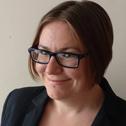Curing DMD: Travelling together to find a meaningful destination

For many years, Duchenne muscular dystrophy (DMD) was something of a forgotten disease.
The boys, and some girls, affected by the rare, genetic muscle wasting condition were not expected to live much longer than their 20s, and treatment options were slim to none.
But in the last couple of decades, the conversation has started to change, and now symptom management and disease modifying therapies are the pipeline.
We talk to patient advocates Marisol Montolio, scientific director of Duchenne Parent Project Spain, and Joaquim Brites, president of the Associação Portuguesa de Neuromusculares (APN), a Portuguese Neuromuscular Diseases Association, about the journey so far and mapping a route to destination ‘cure’.
Destination: cure
DMD is a genetic muscle-wasting condition that mainly affects boys – in the UK around 100 are born with the condition every year and there is no cure.
It tends to be diagnosed in childhood, and until recently carried a life expectancy of the mid-20s. But recent medical advances mean people are now living into their late 20s and even their early 30s.
A lot has changed in the last few years. The first treatments have been approved in the US and Europe and there has been an upsurge in the number of clinical trials, which include studies into gene therapy.
All this means the future is bright for people living with the condition, as well as the milder Becker muscular dystrophy (BMD), which usually develops during the late teens or early 20s.
“I am very optimistic about improvements in treatment. A lot of laboratories are working in Duchenne,” said Marisol, who worked as an academic researcher for 15 years before taking on her current role.
If they produce positive results, these trials could spell a revolution in care for people who live with the progressive disease, which leaves sufferers unable to walk and, in many cases, needing a ventilator just to breathe.
But, as Joaquim pointed out, we are not there yet.
“The expectations about the various future treatments for DMD and BMD have been growing. However, everything still points to a long wait,” he said.
The route: quality of life
There’s a lot that needs to be done to prepare the way for this potential new dawn and to make the journey as comfortable as possible.
That includes creating the right environment for the research needed to develop new drugs.
“At Duchenne Parent Project Spain, we have a research pipeline. To promote the research, it is essential that we have good tools – such as better animal models, biobanks, a patient registry, different grants etc. —available,” said Marisol.
Joaquim agreed, adding there were many challenges to building the infrastructure scientists need to study the long-underserved condition.
“The main one is the organisation of a national registry where all patient characteristics are identified.
“It will be the easiest way to prepare for the various clinical trials that are expected in the near future,” he said.
Of course, it’s not all about drugs – it’s about interventions that will allow people to live well with Duchenne muscular dystrophy.
Joaquim said: “The next steps are to improve the patients’ quality of life so that they can resist better until new treatments are announced.
“It is common to see patients very poorly positioned, with poorly sized and uncomfortable wheelchairs, who sit for more than 12 hours a day. They are also often poorly ventilated, or not ventilated at all.”
To achieve the better quality of life that patients and their families deserve, they need better access to information and services, Joaquim went on.
“Many families feel abandoned, with very little information and very poor access to minimum health care,” he said, adding that true multi-disciplinary teams were needed across Portugal to provide adequate care.
Areas often neglected include cardiac rehabilitation and respiratory function: both of which have a huge impact on a person’s ability to go about their everyday life.
“We need to find help and develop networks that enable Duchenne patients to live as full and healthy a life as possible. We need to create new technology and tools to help them live as young adults,” said Marisol, who believes the whole of society stands to benefit.
“By enhancing these essential conditions and believing in one’s intellectual abilities, it would be easier to create job opportunities and to integrate people with Duchenne into active inclusion, and to benefit from their abilities,” she added.
The journey: travelling together
The pair agreed that achieving the ultimate goal of finding new ways to treat Duchenne and BMD is dependent on everyone working together.
Marisol said: “To have treatments or even a cure for any of the different rare diseases, we need to get all the stakeholders together: that’s regulators, patient organisations, hospitals, academic researchers and the pharmaceutical industry.
“We have come a long way, but we haven't made it even halfway far enough and global collaboration is needed.”
Research is one of the most important planks in the plan for a brighter future for people living with DMD, said Joaquim, but for it to be meaningful, it needs to be patient centric.
“The role of the pharmaceutical industry, especially those most involved with rare diseases, is essential for this type of partnership.
“It shows a different sensitivity in approaching families, patients and their representatives,” he said.
Preparation and collaboration
Joined up thinking and collaboration will prepare the ground for the treatment landscape of the future — and avoid the mistakes of the past.
“The ageing of this generation of people with Duchenne has brought new concerns to the social sector because the costs associated with keeping people ‘active’ were not anticipated in a timely manner,” said Joaquim.
“There was lack of courage and vision for the future when we began to talk about the first animal tests about 20 years ago.”
Today’s Duchenne community, however, stands ready to reap the rewards of medical advances as and when they arrive.
To read further articles in this series please visit our Disease Spotlight: Duchenne Muscular Dystrophy (DMD) channel produced by pharmaphorum in conjunction with Santhera Pharmaceuticals.
About the interviewees
 Marisol Montolio is a biologist with a PhD in Neuroscience from the University of Barcelona. In 2006, she moved to Barcelona's Biomedical Research Park where she specialised in the identification of drugs for neurological diseases, including genetic and degenerative diseases, with two patents in Alzheimer's disease. Subsequently, she continued her career in rare neuro pediatric diseases with a genetic basis at the University of Barcelona. Dr. Marisol Montolio has extensive experience in coordinating and executing research collaborations among academic groups, private companies and foundations/associations for the research of rare diseases. Dr. Marisol Montolio is the Scientific Director of Duchenne Parent Project Spain and Curator of the Patient Registry, promoting scientific research in Duchenne and Becker Muscular Dystrophy. She is also an Adjunct Professor at the University of Barcelona and actively collaborates with EURORDIS as a member of the European Patient Advocacy Group in the European Reference Network (ERN).
Marisol Montolio is a biologist with a PhD in Neuroscience from the University of Barcelona. In 2006, she moved to Barcelona's Biomedical Research Park where she specialised in the identification of drugs for neurological diseases, including genetic and degenerative diseases, with two patents in Alzheimer's disease. Subsequently, she continued her career in rare neuro pediatric diseases with a genetic basis at the University of Barcelona. Dr. Marisol Montolio has extensive experience in coordinating and executing research collaborations among academic groups, private companies and foundations/associations for the research of rare diseases. Dr. Marisol Montolio is the Scientific Director of Duchenne Parent Project Spain and Curator of the Patient Registry, promoting scientific research in Duchenne and Becker Muscular Dystrophy. She is also an Adjunct Professor at the University of Barcelona and actively collaborates with EURORDIS as a member of the European Patient Advocacy Group in the European Reference Network (ERN).
 Joaquim Brites is an Electrical Engineering and Management professional. He graduated from several business schools in the field of Interpersonal Relationships and team leadership. He became a member of the APN Board of Directors – Portuguese Neuromuscular Diseases Association – 20 years ago, and was appointed President in 2012. The priority of the institution has always been to focus on direct support for neuromuscular disease patients and their families. The “Personal Assistance” project, as an essential tool for a (IN) dependent life has been one of its great achievements. Joaquim has been President of the General Assembly of the Portuguese Alliance of Associations of Rare Diseases since 2012 and a representative of Portuguese Neuromuscular Patients in several European organisations. He represents Portugal as a member of the French organisation “Plateforme Maladies Rares.” Born in Leiria, Portugal, he is 58 years old, married and has two children, one of them, a 27 year old boy, with Duchenne Muscular Dystrophy.
Joaquim Brites is an Electrical Engineering and Management professional. He graduated from several business schools in the field of Interpersonal Relationships and team leadership. He became a member of the APN Board of Directors – Portuguese Neuromuscular Diseases Association – 20 years ago, and was appointed President in 2012. The priority of the institution has always been to focus on direct support for neuromuscular disease patients and their families. The “Personal Assistance” project, as an essential tool for a (IN) dependent life has been one of its great achievements. Joaquim has been President of the General Assembly of the Portuguese Alliance of Associations of Rare Diseases since 2012 and a representative of Portuguese Neuromuscular Patients in several European organisations. He represents Portugal as a member of the French organisation “Plateforme Maladies Rares.” Born in Leiria, Portugal, he is 58 years old, married and has two children, one of them, a 27 year old boy, with Duchenne Muscular Dystrophy.












